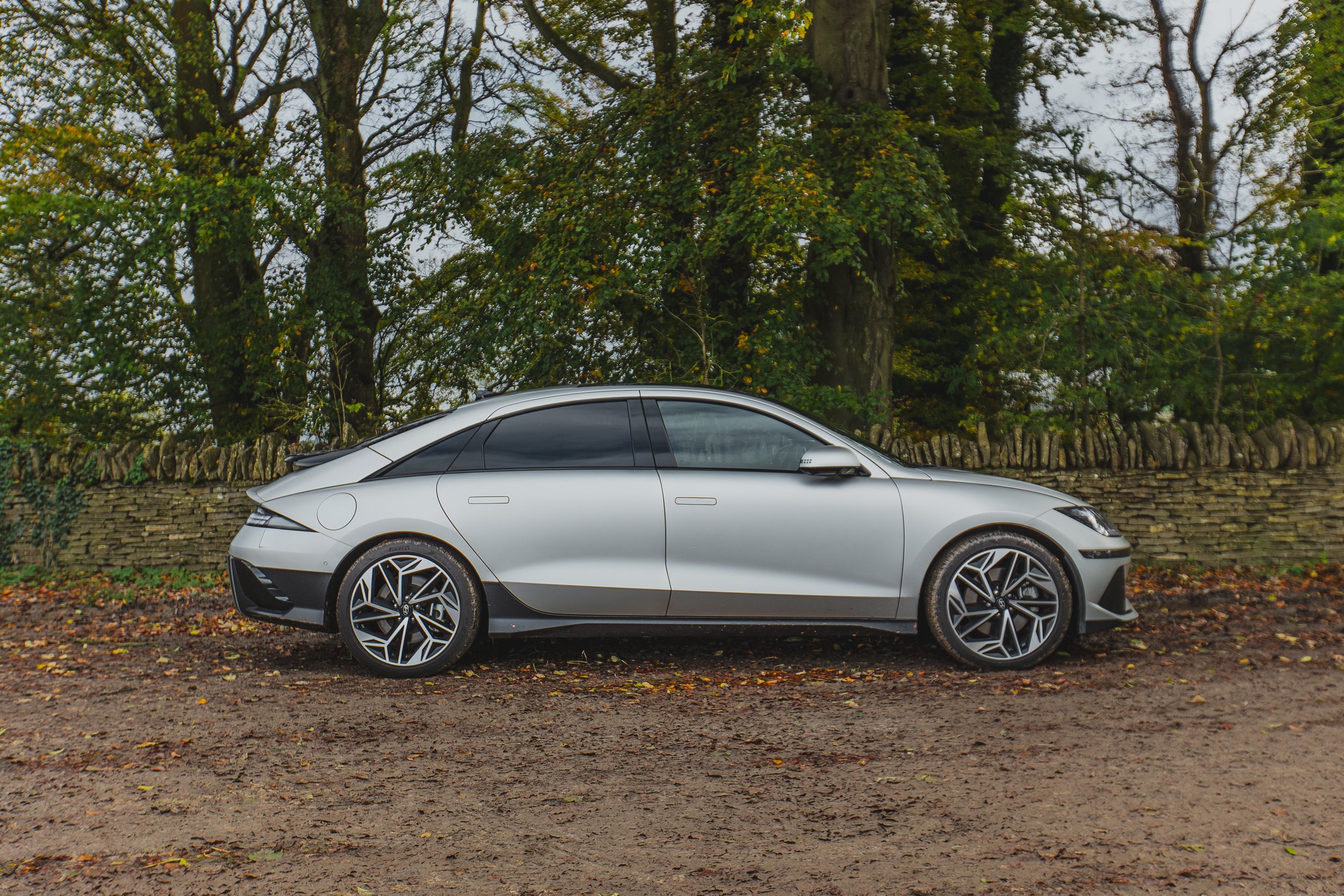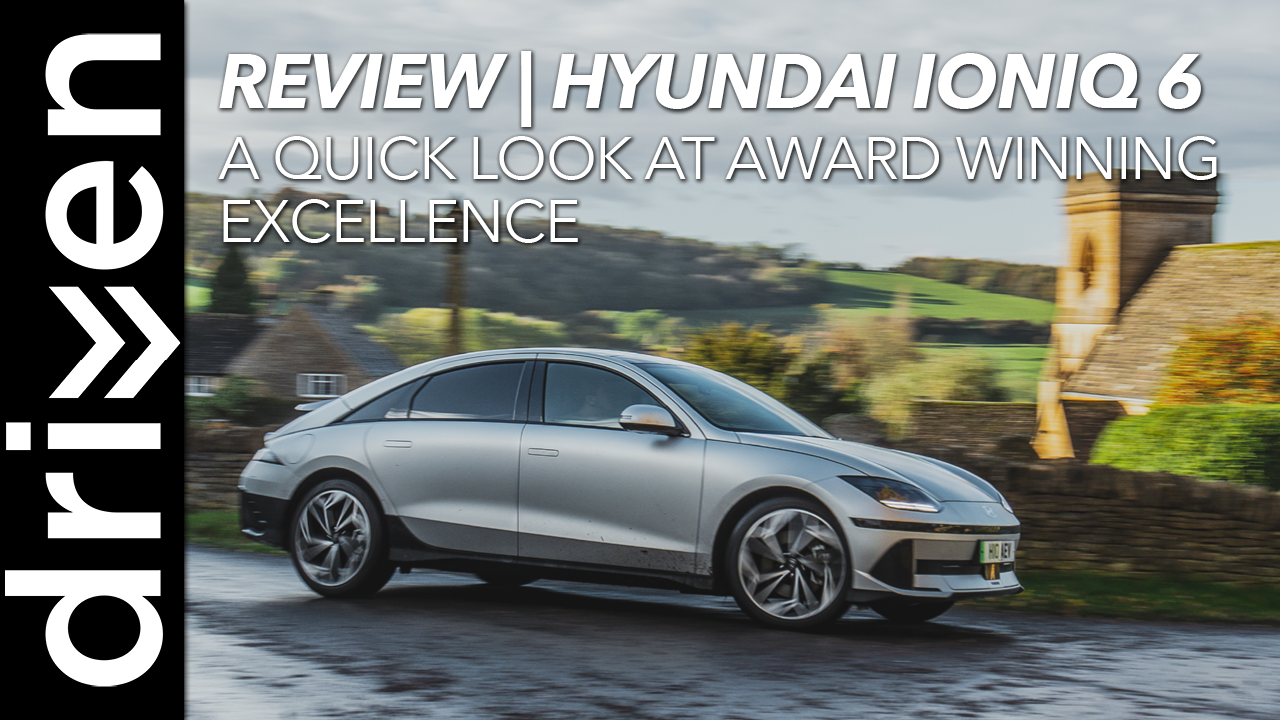Hyundai IONIQ 6 - A Success Story
Hyundai is a real modern-day success story. The motoring arm of the Hyundai brand has been around since the late 1960s; however, we Brits didn't really start to take notice (or delivery) of Hyundai badged cars until the late 1990s-early-00s when we began to see the likes of the Hyundai Coupe, Getz, Matrix and Trajet driving around on our roads.
I'm sure Hyundai will forgive me for saying that the models offered by the brand back at the turn of the millennium weren't quite as desirable as the equivalent German, Japanese or possibly even French offerings. Twenty years on, however, things are very different, and the gaps in quality and desirability are closing when comparing the offerings from South Korea to the European and Japanese equivalents.
What I personally like about Hyundai is the fact that, as a car brand, it does it all. There's a motorsport arm branded as the 'N' (for Nürburgring) division, the WRC (rally) car division, there are small cars designed for everyday use such as the i10, i20 and i30, and there are family cars in the form of crossovers and SUVs. Then there's also what I like to call the futuristic arm - the EV cars - and this is where brands like Hyundai are suddenly excelling alongside other marques that have been popular with car buyers for 30+ years.
Hyundai's latest EV family car offering is a perfect example of the brand's success story. The IONIQ 6 is designed as a usable everyday family car with all the practicalities, familiarities and tech that the modern-day consumer has come to expect. It's based on the same skateboard EV platform as the already very popular SUV, the IONIQ 5. With its futuristic boxy dimensions and contemporary interior, the IONIQ 5 has been a big hit with buyers globally and, for many, has been a car that's caused buyers to break a chain of brand loyalty when shopping for their first EV.
The IONIQ 6 has arrived to appeal to drivers wanting the shape and familiarity of the family car with a bit of contemporary and, dare I say, sporty design thrown in. In a world filled with boxy and blobby SUVs, there is an increased demand for EVs in the shape of a car - I, for one - know which I'd rather be seen in.
The IONIQ 6 is an interesting-looking car. I'm hesitant to say that I think it's good-looking, but it's certainly not ugly. It's contemporary, has some excellent styling queues, and is functional. It's been designed to be as aerodynamically efficient as possible with minimal coherent drag. When comparing the figures with its non-identical twin, the IONIQ 6 has a 0.21 drag coefficient, whereas the SUV-shaped 5 reads 0.29. Without getting into a physics lesson, you can take my word for it that 0.21 is significantly better than 0.29, a stat backed up by the fact that the IONIQ 6 is also the most aerodynamic car ever produced by Hyundai and the 5th most aerodynamic EV on sale currently (November 2023) beating the Porsche Taycan, Tesla Model 3 and Y and even the Audi e-tron GT.
Inside the car, the contemporary styling continues and represents yet another prime example of Hyundai excelling beyond prior expectations with its new range of EVs. The IONIQ 6 is deceptively large. With an exterior length of 4.8 metres and a width of 1.8 metres, there is a lot of room to play with on the inside. The result is generous and luxurious seating with ample legroom from all seats. The clever interior design gives a spacious feel despite the exterior shape. Taller passengers in the rear may initially fear the sloping roofline may cause some claustrophobia, but at 6'1 / 185cm, I can't say I felt all too bothered by it in the back seat. The two outer rear seats are heated and have cupholders and USB ports within reach. Up front, the space is ample. The large centre console between the driver and front passenger seat gives a sporty feel and provides storage, cup holders and switchgear.
The large centre touchscreen is excellent for cycling through settings, media options, navigation and climate control. In addition to the screen, there is a mixture of physical push and touch-sensitive buttons on the centre console, which are handy for making quick adjustments on the move.
The model I've been testing is described as IONIQ 6 Ultimate 77.4KWh 228PS RWD. 'Ultimate' signifies the trim and level of standard equipment included, which is vast. As standard, buyers are rewarded with a BOSE premium sound system, fully electric comfort seats which are heated and ventilated, heated rear seats and more tech in the form of driver aides and assists than my word count will allow. RWD signifies that only the rear wheels are driven but, in doing so, enables the car to offer the maximum possible range of 338 miles. This range is, of course, a best-case scenario, but in my week with the car and following some sedate driving, I achieved a predicted range on a full charge of 299 miles, which for the vast majority is more than most people are likely to need.
The choice of driven wheels also results in two possible options of power - my RWD has 228PS (which translates to around 224BHP), or if you're looking for a little more speed and power, then the Ultimate AWD (all wheel drive) rewards 325PS (320BHP). Due to the additional motor, the AWD variant has a reduced range of up to 316 miles, but testing results in an actual world average of closer to 270 miles.
Charge times are impressive, too. A typical 11kW home charger will offer a full 0-100% charge in just over 7 hours - ideal for overnight charging. A 55kW charger will give 0-100% in less than 90 minutes, and if you have access to a 350kW charger, a full charge could be achieved in around 30 minutes.
With the variation of trim levels, the IONIQ 6 retails from £47,040.00 for the premium 77.4KWh 228 RWD edition and tops out at £55,920.00 for the Ultimate pack, which boasts the higher power output and just about every possible standard luxury option, including matte paint and digital side mirrors. At this price, it's comparable to within a few hundred pounds of a similarly specced BMW i4, and in my opinion, rightly so.
The fair pricing reflects the success story of Hyundai. 15-20 years ago, customers would have been laughing out of the dealership door if a Hyundai family car were in a showroom with a price tag even remotely close to the equivalent BMW. Now, though, I doubt anyone is likely even to draw in a remotely sharp breath.
Overall, the car offers a great transition to EV, and I feel that in the same way the IONIQ 5 disrupted chains of brand loyalty for buyers wanting their first EV SUV, the 6 is likely to do the same for consumers wanting a new family car. It's an effortless car to like. The driving dynamics are all familiar and engaging, and the included tech to assist with things like lane departure, adaptive cruise control, automatic speed adjustment, brake assist, park assist, and 360-degree cameras are all just as good, if not slightly better than the equivalents from other brands such as the BMW i4. Some of the assists can be a tad annoying, thanks to the pings and bongs that have become a standard gripe with anything remotely new, but the pros of efficiency and convenience certainly outweigh the cons.
See more from the Hyundai IONIQ 6 on our YouTube Channel






























